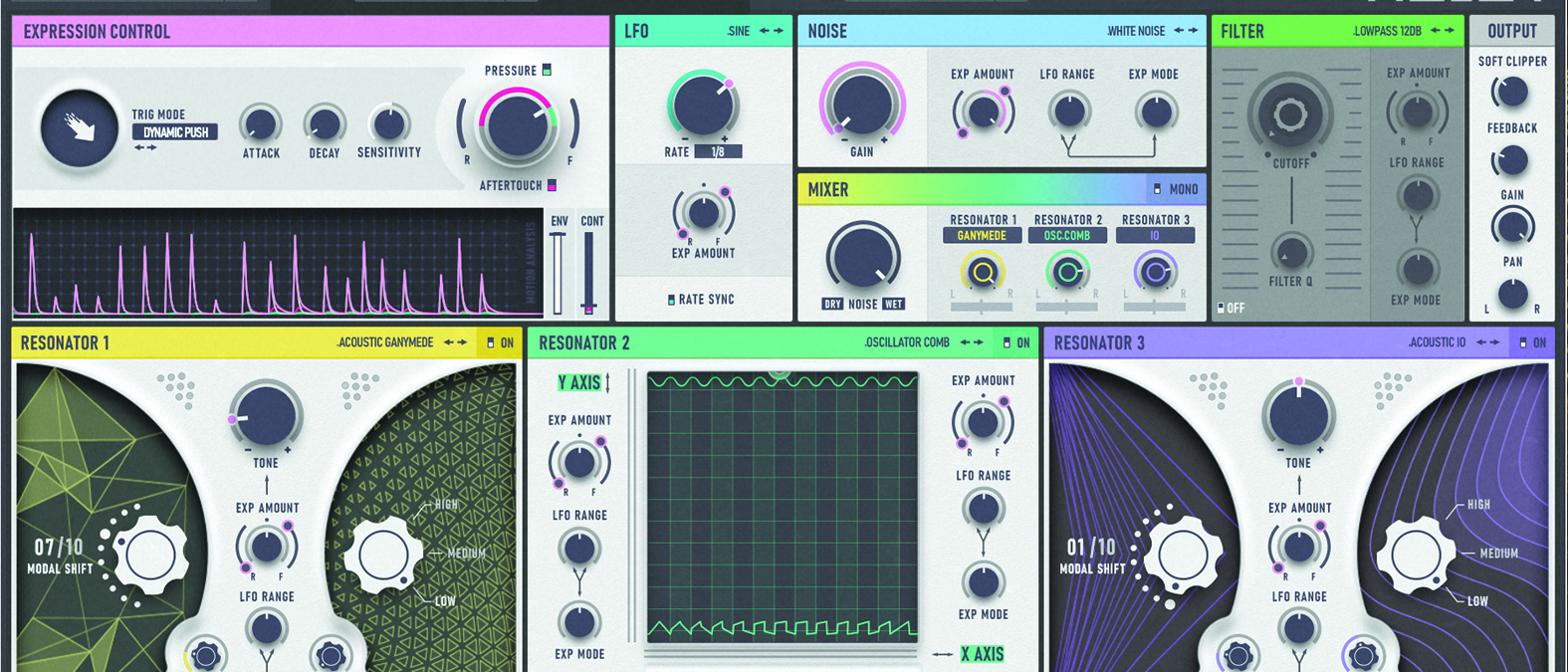MusicRadar Verdict
Expressive E has engineered a unique-sounding synth plugin to create absorbing sounds and textures. The enhanced MPE control is very much worth exploring.
Pros
- +
Enormously versatile and capable synth plugin.
- +
The resonators are extremely versatile and inspiring.
- +
Very expressive if used with a suitable MPE controller.
- +
MIDI control for non-MPE users too.
- +
It’s fairly unique, and that’s very cool.
Cons
- -
Navigation is a little clunky.
- -
Limited envelope control, but enhanced MPE helps strike the balance.
MusicRadar's got your back
Expressive E Noisy 2: What is it?
macOS: 11 (Big Sur) and higher (Apple silicon & Intel chips)
Windows: 10 and higher
Recommended CPU: Intel Core i5 - 7400 or Ryzen 5 2600 (i7 or Ryzen recommended)
Recommended RAM: 4 GB
Format: VST2, VST3 & AU compatible, PACE iLok, no hardware dongle required, up to 3 activations
Buy at Plugin Boutique
Synthesizers come in many shapes and sizes; from hardware to software, East to West coast, there are many different takes on the familiar form factors. But if there’s one country that has a tendency to innovate in the realm of music technology, it’s France. From IRCAM to Jean-Michel Jarre, France has an enviable reputation for sonic experimentation and innovation, including a slew of notable developer brands.
French company Expressive E is the latest collective to participate in this tradition. In historic terms, it’s a relatively young company, but that hasn’t prevented it from creating sonic ripples via its innovative hardware designs and software instruments. Its relentless pursuit of musical expression through the use of MPE (MIDI Polyphonic Expression) runs through its product listings like lettering through a stick of rock, and that extends to its latest software release, Noisy 2.
As the name would suggest, Noisy 2 is a plugin synthesizer which begins its sonic journey through the use of noise. If you are used to the usual subtractive designs, you will see small glimmers of familiarity, but as a sonic construct, Noisy 2 is a relatively different proposition.
You will see small glimmers of familiarity, but as a sonic construct, Noisy 2 is a different proposition
Noisy 2 draws inspiration from past French masters, through the use of resonators. As a concept, this extends back to French instrument pioneers Ondes, who produced the Martenot in 1928. The Ondes Martenot bridged the gap between electronic and acoustic instruments through the use of resonators, as part of the instrument’s amplification process. This translates within the plugin to a sonic palette which can swing from a traditional synthetic sawtooth, to beautifully complex and harmonically rich sounds, which sound electronic and acoustic in equal measure.
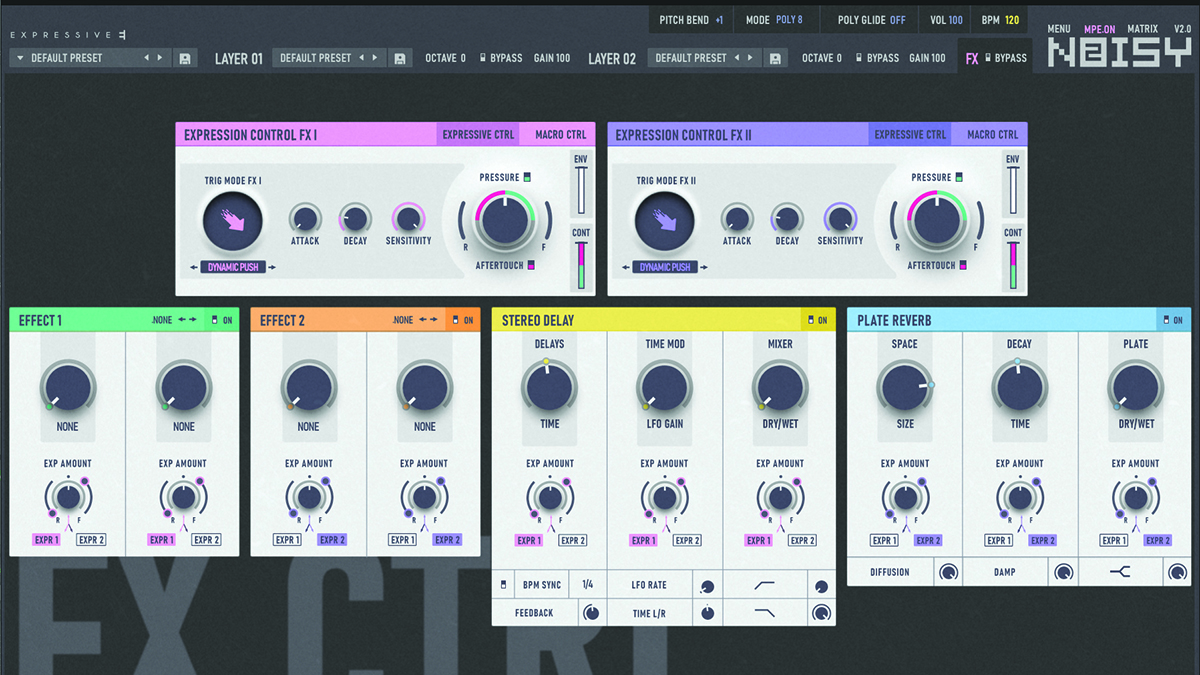
Expressive E Noisy 2: Performance and verdict
The nucleus of any patch creation is a combination of two elements; firstly, the Noise section delivers a selection of 21 different noise types, ranging from traditional white and pink noise, through to noises described as interference, bubbles and frying! Given that all of these noises predominantly come from the same form of stable, these adjectives are fairly useful, and relatively accurate in their description. The selected noise then acts as an exciter for the second element in the signal path, which is the resonator. These can be thought of as oscillators, particularly as some resonator settings will deliver familiar oscillator-style tones, while tracking your keyboard input to cater for pitch.
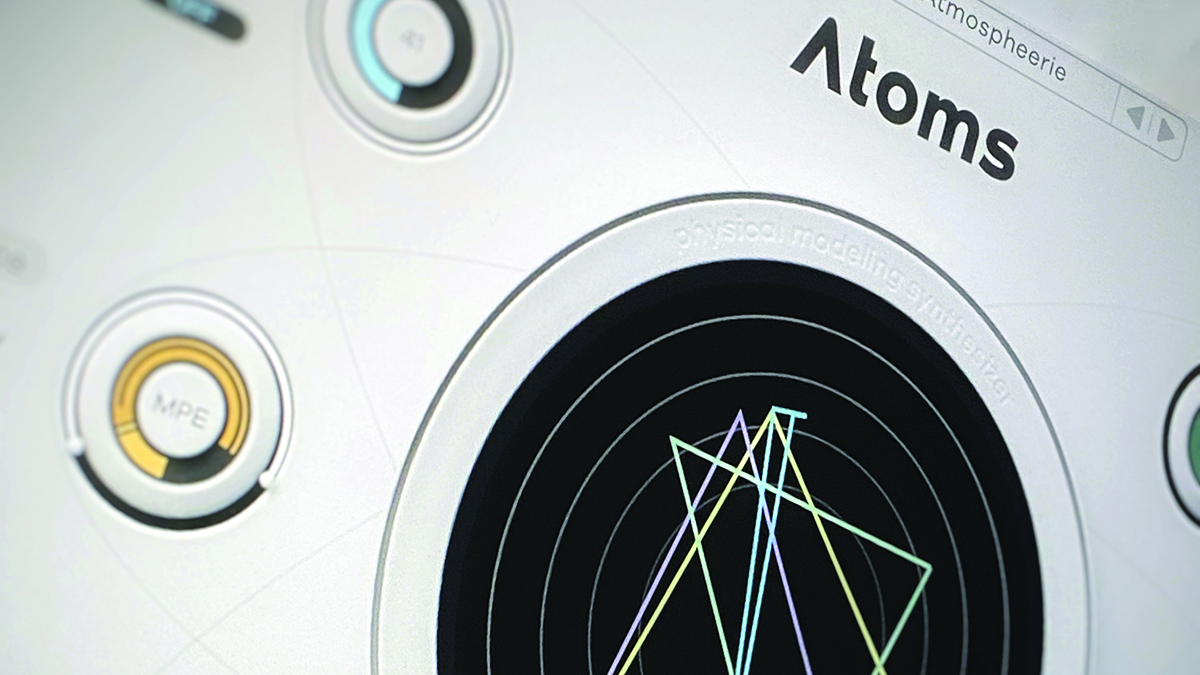
• Baby Audio Atoms
This stylish little plugin provides a host of organic sounds.
• Apple Sculpture
Sculpture is one of the most underrated and unexploited synths from within the Logic package.
Much like oscillators on a subtractive synthesizer, the resonators can generate different types of tone source, like a waveform selector. The big difference here is that the tonal palette falls into three categories; firstly, an oscillator and comb filter arrangement allows analogue-style tones, while a second resonator provides an analogue pulse, with width modulation. These two elements make up what could be regarded as the traditional side of Noisy 2, at least in synthesis terms, but where things get really interesting is with the acoustic resonators. This new collection of four resonators bridges that gap between electronic and acoustic. All four examples provide exceptionally rich harmonic constructs, which can be sculpted and formed to create incredibly endearing textures, and jagged or sharp-sounding timbre.
You can use any combination of three resonators at one time, much like the more commonplace three traditional oscillators. These are in turn blended via the mixer section, at which stage panning can also be applied across the stereo image. Subtractive support is also available at the next stage, where a filter provides five different filter flavours, ranging from low, band and high-pass states. It’s worth saying that the filter may not be required for the acoustic resonators, because there are so many elements that can be applied at the resonator level, but it is always nice to have the option.
Want all the hottest music and gear news, reviews, deals, features and more, direct to your inbox? Sign up here.
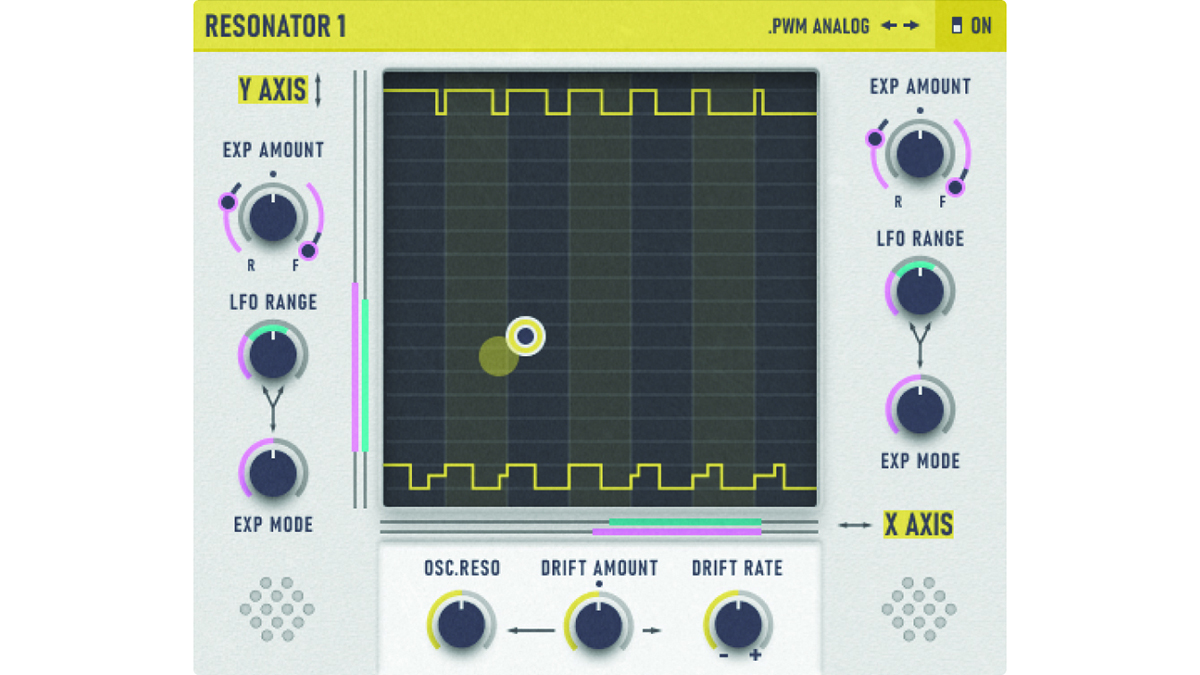
Resonating X and Y
Stepping back to the resonators for a moment, the more traditional resonators provide an X/Y pad, which allows movement between different settings. As an example, the oscillator comb resonator provides a blending of signals between a sine wave at the top of the pad, and a blended wave at the bottom, which morphs between triangle, pulse and saw, depending on where you drag your mouse on the pad. Going further, the X and Y axis are open to modulation from various sources, including LFO, which is instantly accessible from the main panel. With all the usual subtractive-style waveforms available, the LFO can create sweeps at various speeds, or select a pulse or random source, for gating effects.
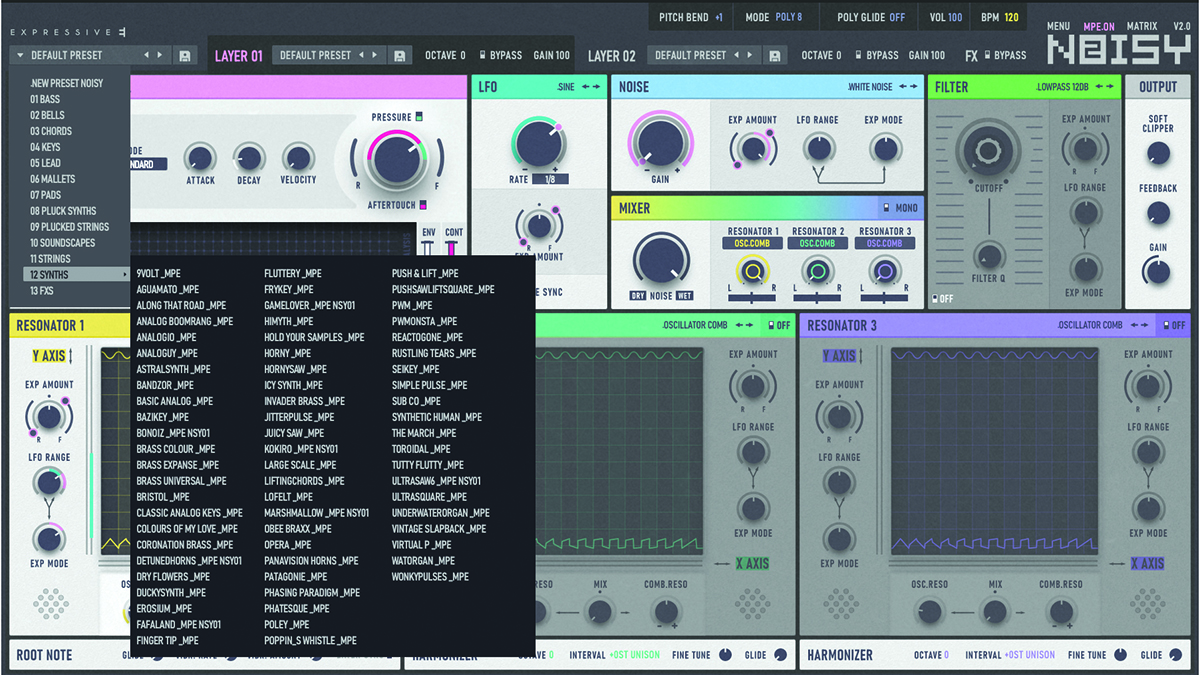
To MPE or not MPE
Expressive E is definitely on a crusade when it comes to the implementation of the MPE format. Taking advantage of MPE is entirely reliant upon having an MPE-compliant keyboard or controller available.
Expressive E is definitely on a crusade when it comes to the implementation of the MPE format
Generally speaking, there are effectively three different types of electronic keyboard in use today. Leaving aside the basic keyboards of old (which were effectively just on/off switches), current entry-level MIDI controllers will provide velocity sensitivity, which means that they will react dynamically, reflecting the amount with which you strike a key and trigger a note. The next step upward relates to keyboards which offer aftertouch; once a key is struck, you can then depress the notes down further to invoke a reaction in the sound, providing your receiving plugin or synth happens to respond to aftertouch. It’s important to note that regular aftertouch does not operate on an individual note basis. This is where MPE comes into the equation, as it takes things a stage further, providing aftertouch at the individual note level.
Noisy 2 is equipped with full MPE compatibility. If activated within the plugin, it opens up a level of control which surpasses many other software synthesizers. Many regard this as the holy grail of keyboard control, as it means you can play a chord, but then introduce levels of expression at the individual note level, long after the initial note strike.
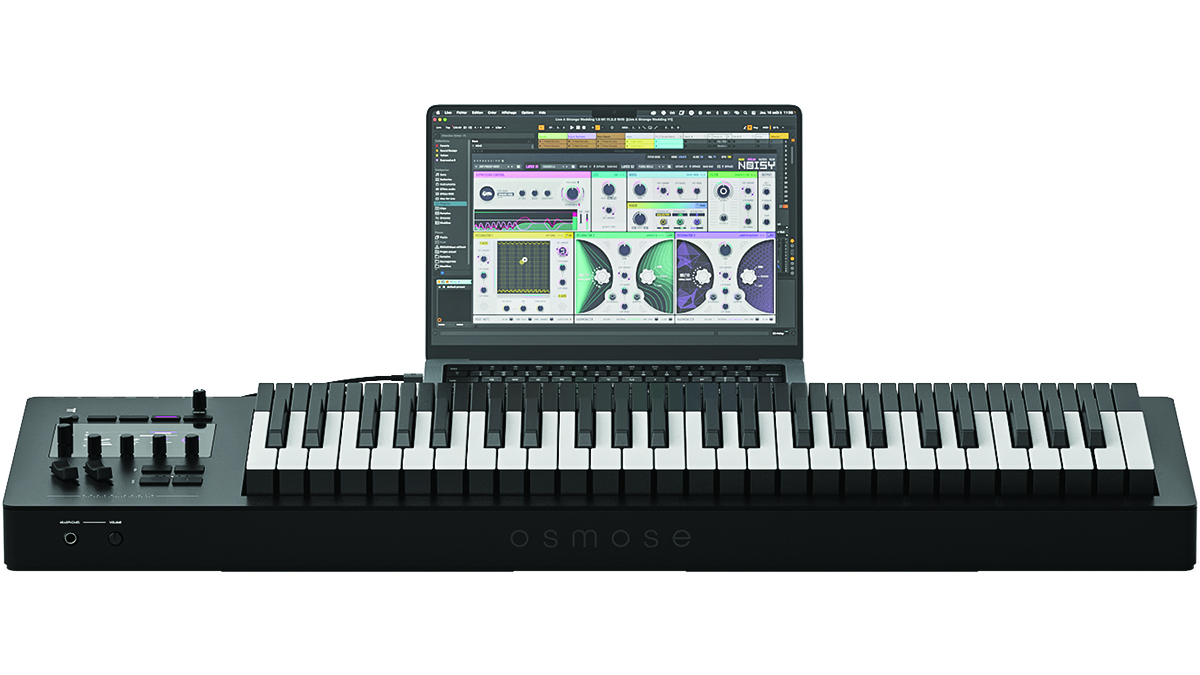
We were lucky enough to have a MPE controller available, in the shape of Expressive E’s extraordinary Osmose synth and keyboard controller, but it is worth stating that we also tried it alongside a regular keyboard, with a fader-controller. Plenty of the included patches really do take advantage of the MPE protocol, but there are ways around this if you are using something without MPE compatibility. You may not be able to access control at the note level, but you can still do an awful lot without MPE, so this should not be considered a deal-breaker, if you were considering buying it.
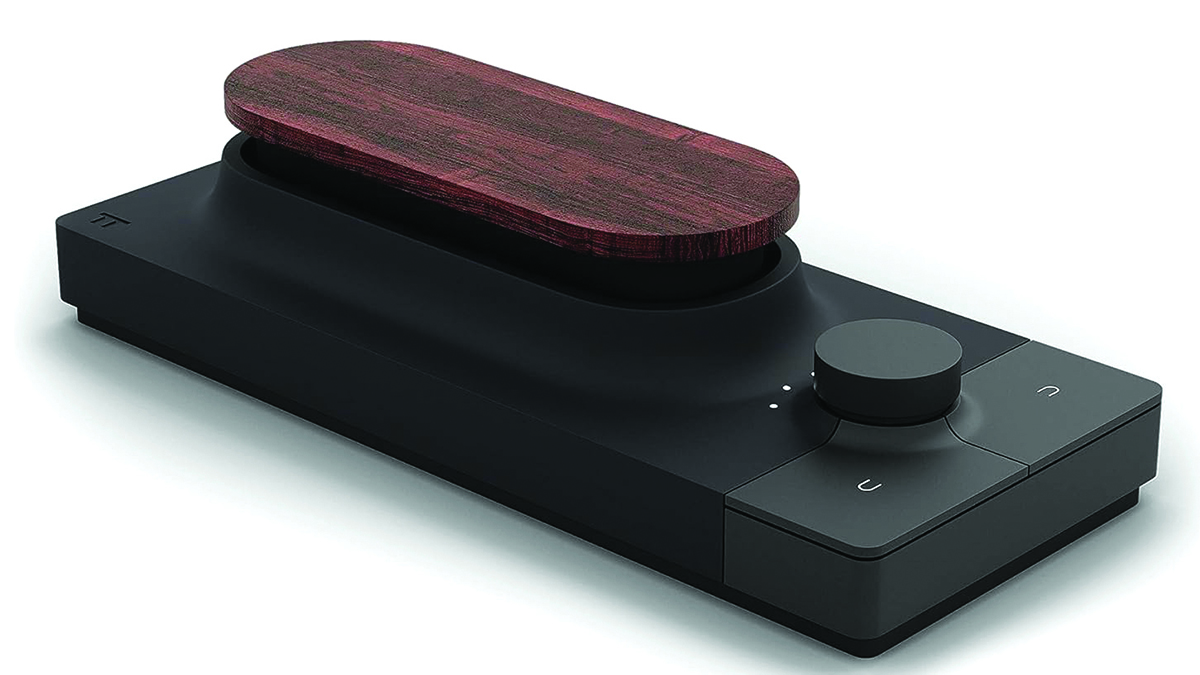
Summing up the signals
Like many unfamiliar or more complex forms of synthesizers, Noisy 2 does require a fair degree of sonic exploration. You can of course do this via the preset menu, where patches are all curated within categories, but the strength of Noisy 2 lies within its canvas for creativity. The resonators are complex and hugely captivating. This complexity is accompanied by a requirement to learn how to get the best from Noisy 2, compounded by the versatility of the three resonator signals. However, the layering does not end with the resonators, with two full synth layers combining into a single patch. Couple this with a host of other options relating to polyphonic glissando, harmonisation, and overall expression, and Noisy 2 is a considerable creative audio suite, for sounds which reach far across the electronic divide.
MusicRadar verdict: Expressive E has engineered a unique-sounding synth plugin to create absorbing sounds and textures. The enhanced MPE control is very much worth exploring.
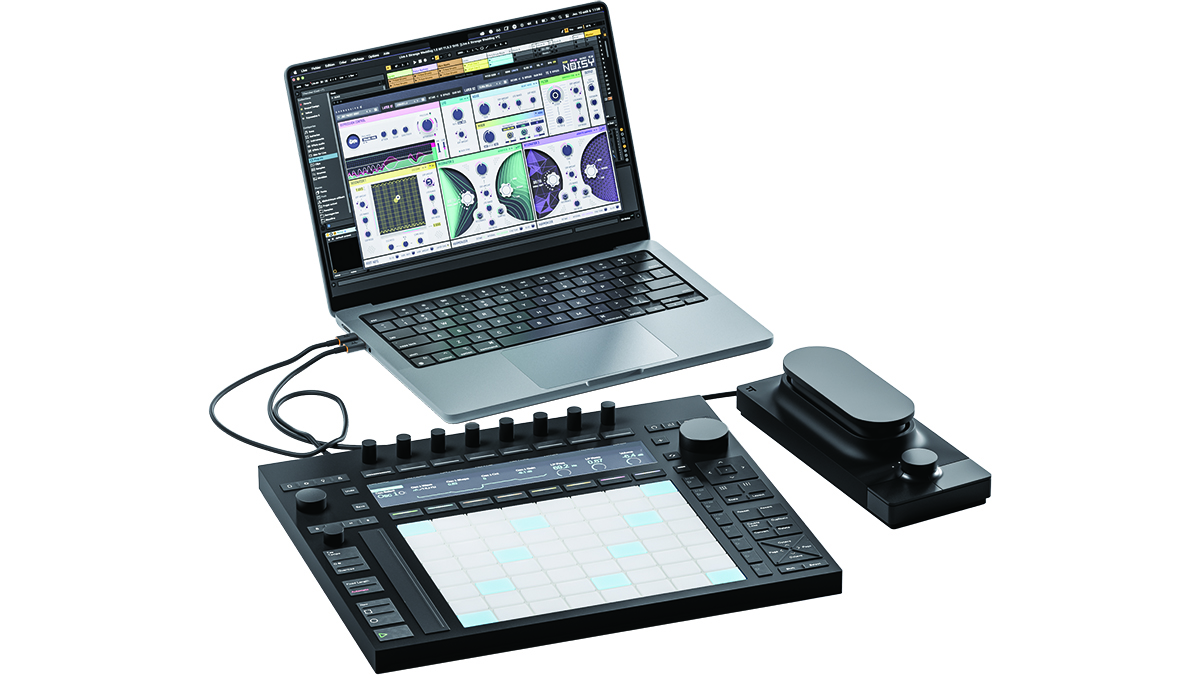
Expressive E Noisy 2: Hands-on demos
Expressive E
Jef Gibbons
Happy Mag
sonicstate
Expressive E Noisy 2: Specifications
- macOS 11 (Big Sur) and higher. (Apple silicon & Intel chips).
- Windows 10 and higher.
- Compatability: VST2, VST3 & Audio Units.
- CONTACT: Expressive E
Roland Schmidt is a professional programmer, sound designer and producer, who has worked in collaboration with a number of successful production teams over the last 25 years. He can also be found delivering regular and key-note lectures on the use of hardware/software synthesisers and production, at various higher educational institutions throughout the UK
